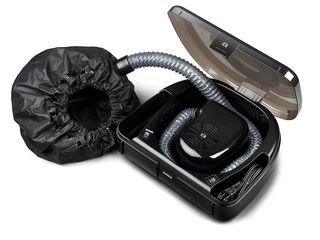Of all the three hair porosity types—low, normal, and high—low porosity hair can be such a nuisance sometimes. Porosity, in general, is the hair’s ability to absorb or retain moisture. “Porous hair retains more water therefore it is more difficult to dry and style. It is also extremely challenging to apply hair color on porous hair,” veteran French hairstylist Frederic Fekkai tells ELLE.com. But low porosity hair, especially in curly hair, has a hard time absorbing products and repels water, making your wash day longer than it needs to be. To help you understand low porosity hair and how to treat it, read on for Fekkai’s tips.
What does low porosity look/feel like?
If you notice any matting in your hair or your strands feel a bit rubbery, you likely have low porosity hair. “With low porosity there’s a lot of product build up and curls take quite some time to dry,” Fekkai explains. Low porosity hair makes it “very difficult to get oils to penetrate through” so oils, creams, and lotions tend to hit on the hair’s surface.
How can you determine if you have low porosity hair?
“You will immediately see lack of luster and hair elasticity. The hair will start to split as well,” Fekkai says. Of course, you can perform a strand test by placing a strand of your hair in a cup of water; if it floats to the top, then you have low porosity hair. Fekkai adds that low porosity hair “takes a long time to become fully drenched with water when washing.”
How do you treat low porosity hair?
Masks will be your best friend, according to Fekkai. “You can treat low porosity hair by using a very nurturing and rich treatment mask,” he says. You should apply the mask to damp hair and work the product in to ensure the product is penetrating through the hair. Adding heat helps to open the hair’s cuticles, so investing in a hooded dryer or steamer will produce the best results. ” Cold water should be used to rinse the hair in order to seal the hair cuticles and help with frizz,” he adds.
What products are best for low porosity hair?
Fekkai suggests using a cream in order to seal moisture in the hair cuticle. “Hydrating deep conditioning treatments should be added to your haircare routine. Low porosity hair loves products lighter products that provide moisture,” he explains. As previously mentioned, heat helps to open up the hair’s cuticles. But you should stay away from using too much oils. “Hair oils are difficult to get out of your hair. You should also stay away from any heavy products since they tend to sit on top of low porosity hair. And avoid alcohol-based products.”




